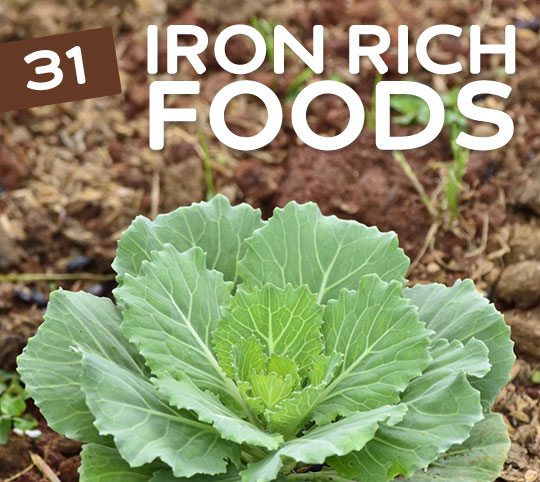Many vegetarians and vegans worry about getting enough iron in their diet. Since meat is traditionally thought of as the main source of iron, vegetarians need to find different sources to help them reach their recommended amount of iron each day. Fortunately, there are several delicious and easy-to-prepare options that are both rich in iron and vegetarian-friendly.
[hr]
[column size=”one-half”]

Brussels Sprouts
You may have resisted Brussels sprouts as a kid, but they’re hard to resist once you learn just how healthy these tasty veggies are. Brussels sprouts are a viable source of antioxidants, vitamins, folate, and fiber. Plus, they’re an excellent source of iron, and an obvious choice in helping to prevent fatigue and other symptoms of iron deficiency.
Serving Size (1/2 cup), 0.9 milligrams of iron (5% DV), 28 calories[/column]
[column size=”one-half” last=”true”]
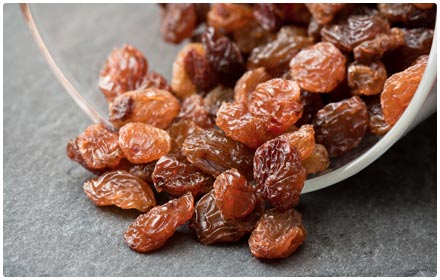
Raisins
Like other dried fruits, raisins are nutrient-dense treats that contain large amounts of iron. It’s easy to add a handful of these subtly sweet treats to your cereal, yogurt, oatmeal, or salads as part of a balanced diet. To get the most out of your next handful of raisins, combine them with other healthy foods containing vitamin C. This will make it easier for your body to absorb the iron found in raisins.
Serving Size (1 small box), 0.8 milligrams of iron (4% DV), 129 calories[/column]
[column size=”one-half”]

Lentils
Many vegetarians worry about not getting enough iron or protein in their diets. Lentils can solve both problems, and then some! These colorful legumes are packed with vitamins and nutrients including iron, protein, and essential amino acids. Plus, they’re easy to cook and make a great companion to many meals. Lentils are traditionally used in Indian and Middle Eastern dishes, but they can spice up your soups, stews, pastas, and more.
Serving Size (1 cup, boiled), 6.6 milligrams of iron (37% DV), 230 calories[/column]
[column size=”one-half” last=”true”]
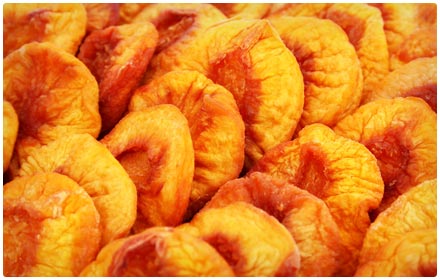
Dried Peaches
If you’re trying to get more iron in your diet, opt for dried fruit as opposed to fresh. Dried fruits pack more nutrients, including iron, per serving. Dried peaches make a great breakfast companion, a delicious addition to salads, and an easy snack throughout your busy day. A 100-gram serving of dried peaches contains about 23% of your daily recommended iron, without weighing you down with lots of sugar and calories.
Serving Size (100 grams), 4.1 milligrams of iron (23% DV), 239 calories[/column]
[AdSense-A]
[column size=”one-half”]

Pumpkin Seeds
If you stopped eating pumpkin seeds when you stopped carving pumpkins as a kid, now is the time to start back up again. A handful of pumpkin seeds, or an ounce, contains about one milligram of iron. That’s about 5% of the recommended daily value. Pumpkin seeds provide the most benefit when eaten raw, but they still pack an iron punch when roasted for no more than 15-20 minutes.
Serving Size (1 ounce, about a handful), 4.2 milligrams of iron (23% DV), 151 calories.[/column]
[column size=”one-half” last=”true”]

Soybeans
Soybeans are another super food that packs protein, unsaturated fat (the “good fat”), fiber, and minerals such as iron. A single cup of mature, boiled soybeans contains nearly half the recommended amount of iron your body needs daily. Another great thing about soybeans is their versatility. Season these nutritional powerhouses to your liking, or add them to soups or chili for a healthy and delicious meal.
Serving Size (1 cup, boiled), 4.5 milligrams of iron (25% DV), 254 calories[/column]
[column size=”one-half”]
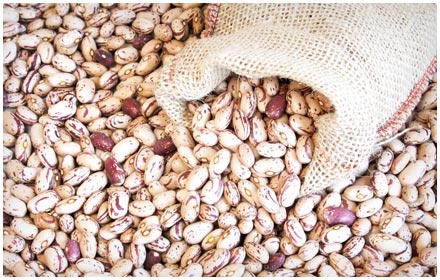
Pinto Beans
Pinto beans contain a splash of color and a spattering of essential vitamins and minerals. Among them is iron, and it comes in no small quantity; just a cup of boiled pinto beans yields about 21% of the recommended daily value. Pair these colorful legumes with whole wheat rice for a virtually fat-free meal that’s as easy on your wallet as it is on your waistline. Or, enjoy them with your favorite veggies to introduce even more iron into your diet.
Serving Size (1 cup, boiled), 3.6 milligrams of iron (20% DV), 245 calories[/column]
[column size=”one-half” last=”true”]

Arugula
Dark greens such as arugula have countless health benefits with a tiny calorie count. Vegetarians should consume plenty arugula, particularly for its rich iron content. Adding several servings to your diet each week can greatly improve the health of your red blood cells. The easiest way to enjoy arugula is in a green leafy salad, but you can also enjoy it in soups, as a pizza topping, and sautéed with pasta and other dishes.
Serving Size (1/2 cup), 0.1 milligrams of iron (1% DV), 2.5 calories[/column]
[column size=”one-half”]

Whole Wheat Pasta
Vegetarians should enjoy whole wheat pasta as part of a healthy balanced diet. Eating pasta is a great way to curb your cravings for carbs while getting essential minerals such as magnesium, calcium, potassium, and iron. While white pasta contains these minerals as well, it can also weigh you down with extra carbs and calories, so choose the much healthier whole wheat pasta options.
Serving Size (1 cup), 1.5 milligrams of iron (8% DV), 174 calories[/column]
[column size=”one-half” last=”true”]

Collard Greens
With staggering amounts of calcium, high levels of vitamin A, and several cancer-fighting elements, what’s not to love about collard greens? Vegetarians have another reason to love these dark green veggies, because they’re also high in both iron and vitamin C. To get the most out of these essential nutrients, use raw collard greens in a salad that’s filled with other iron-rich vegetables. The vitamin C in collard greens makes it easy for your body to absorb iron from other sources.
Serving Size (1 cup), 2.2 milligrams of iron (12% DV), 49.4 calories[/column]
[column size=”one-half”]
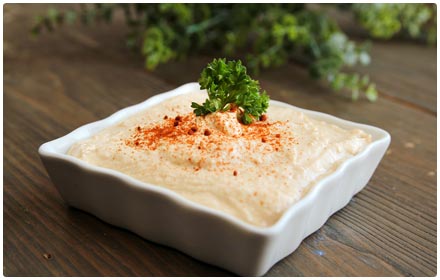
Sesame Butter (Tahini)
Sesame butter, also known as tahini and often associated with hummus, can provide the body with a tremendous amount of iron. If you’re already eating plenty of iron-rich fruits and vegetables, tahini can be an excellent addition that will help you reach your daily iron needs. Many people eat tahini as is, but you can also use it to add some flavor to your favorite vegetables or to dress up a salad.
Serving Size (1 tablespoon), 1.3 milligrams of iron (7% DV), 89.2 calories[/column]
[column size=”one-half” last=”true”]

Dried Thyme
With dried thyme at your disposal, cooking and eating your favorite vegetables will never get old. Thyme offers a unique lemon-pepper flavor that works well in many dishes. It also offers plenty of essential iron. In fact, dried thyme is one of the most iron-rich herbs you can find. And with so few calories, it makes a healthy, savory addition to your meals.
Serving Size (1 teaspoon), 1.2 milligrams of iron (7% DV), 2.8 calories[/column]
[column size=”one-half”]
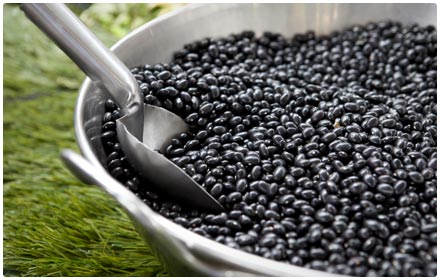
Black Beans
Beans are good all around; they’re easy on your health and your budget. Black beans, in particular, are loaded with fiber, protein, and iron. That means they satisfy hunger while providing an energy boost that lasts for hours. Vegetarians who are concerned about getting enough iron need only add a one-cup serving of black beans to get about 20% of their daily recommended intake.
Serving Size (1 cup, boiled), 3.6 milligrams of iron (20% DV), 277 calories[/column]
[column size=”one-half” last=”true”]
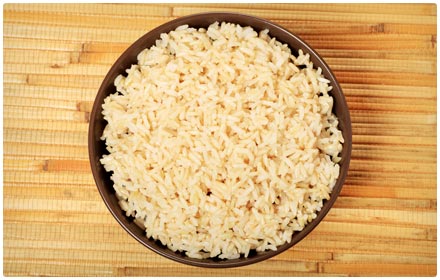
Brown Rice
Brown rice is one of the most versatile foods on Earth. It’s a staple in several cultures’ cuisines, and it’s widely regarded as an important health food. It’s naturally rich in fiber, it helps rid the body of toxins, and its high iron content also helps fight anemia and fatigue. Cook a serving of brown rice along with your favorite beans or veggies for an iron-rich meal that will keep you feeling full for hours.
Serving Size (1 cup), 0.8 milligrams of iron (5% DV), 216 calories[/column]
[column size=”one-half”]
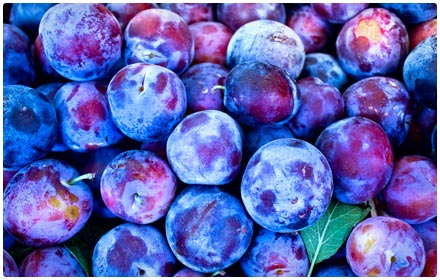
Prune Juice
There’s a bit of a stigma when it comes to prune juice, but learning about its bounds of health benefits might help make it more appealing. Give it a chance and you might find that prune juice is not only delicious, but it’s also a potent source of iron. Its high vitamin C content makes it easier for your body to absorb the iron, so have a glass with your next meal to get the most out of the other iron-rich foods in your diet.
Serving Size (1 cup), 3 milligrams of iron (17% DV), 182 calories[/column]
[column size=”one-half” last=”true”]

Oatmeal
Iron deficiency can be greatly reduced by adding oatmeal to your diet. Just a half-cup serving is packed with almost two milligrams of iron. And with loads of other nutrients, oatmeal is a fantastic health food that everyone should be eating more of. It’s an easy and healthy breakfast food, but you can also use oats to make granola, cookies, and other sweet treats that are both delicious and nutritious.
Serving Size (1/2 cup), 3.4 milligrams of iron (19% DV), 307 calories[/column]
[column size=”one-half”]
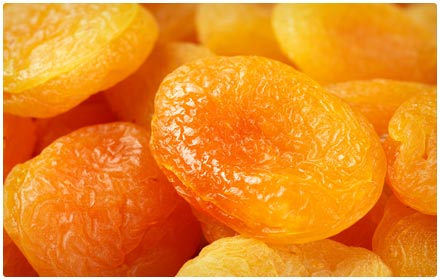
Dried Apricots
Apricots are an excellent source of iron and other nutrients. They can be consumed raw, canned, cooked, and dried, but dried apricots provide your body with the most benefits and the largest amount of iron. When apricots are dried, they lose their high water and sugar contents without losing their highly nutritious qualities. Just a 100-gram serving of apricots can provide you with up to 15% of your daily iron intake. They make for an easy snack throughout the day, or chop them up to serve with other fruits or over a salad.
Serving Size (100 grams), 2.7 milligrams of iron (15% DV), 241 calories.[/column]
[column size=”one-half” last=”true”]

Potatoes
Potatoes are one of the most versatile foods out there, and they’re also one of the best iron-rich food options for vegetarians. Since potatoes are also packed with vitamin C, it’s easier for your body to absorb the iron it needs. Potatoes work equally well as a side dish and a main attraction, so combine them with other iron-rich foods for a healthy meal any time of the day.
Serving Size (1 medium potato with skin), 1.9 milligrams of iron (10% DV), 36.6 calories[/column]
[column size=”one-half”]

Tofu
Though tofu is typically associated with Asian cuisine, this versatile and nutritious food has made its way to dinner tables around the world. And rightfully so: tofu is highly nutritious and rich in iron and other essential minerals. Though most people know about the health benefits, many aren’t sure how to prepare tofu, or they’re unimpressed with its bland taste. Fortunately, tofu has a wonderful ability to take on the flavors of the sauces and seasonings it’s prepared with, so learning to love it is as easy as choosing your favorite ingredients and going from there.
Serving Size (1/2 cup), 2 milligrams of iron (11% DV), 88.2 calories[/column]
[column size=”one-half” last=”true”]

Sun Dried Tomatoes
Besides their mouth-watering taste, one of the best things about sun dried tomatoes is their high iron content. One cup contains nearly 30 percent of your recommended daily iron intake. Another great thing is that you can use them in so many ways. Sun dried tomatoes make a tasty addition to omelets, pasta sauce, pizza, sandwiches, salads, and so much more. They’re also high in healthy lycopene, antioxidants, and vitamin C, so add them to your diet for a health boost all around.
Serving Size (1 cup), 4.9 milligrams of iron (27% DV), 139 calories[/column]
[column size=”one-half”]

Molasses
If you ever get tired of eating fruits and vegetables as your main source of iron, switch it up by adding blackstrap molasses to your meals and even your beverages. Just a teaspoon of tasty molasses added to your toast, cereal, sandwiches, milk, or water contributes about 5% to your daily iron quota.
Serving Size (1 tablespoon), 0.9 milligrams of iron (5% DV), 58 calories[/column]
[column size=”one-half” last=”true”]
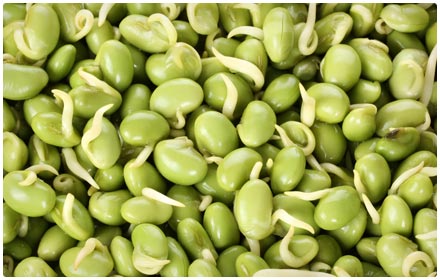
Lima Beans
Lima beans are one of the most ancient cultivated crops, and they’re still renowned as a delicious and healthful food to this day. Enjoy just a cup of lima beans with your favorite meal you’ll get an incredible 25% of your iron for the day. Lima beans should never be consumed raw, but cooked lima beans have a unique flavor that can be enjoyed as is or enhanced with your favorite herbs and spices.
Serving Size (1 cup, cooked), 4.5 milligrams of iron (25% DV), 216 calories[/column]
[column size=”one-half”]
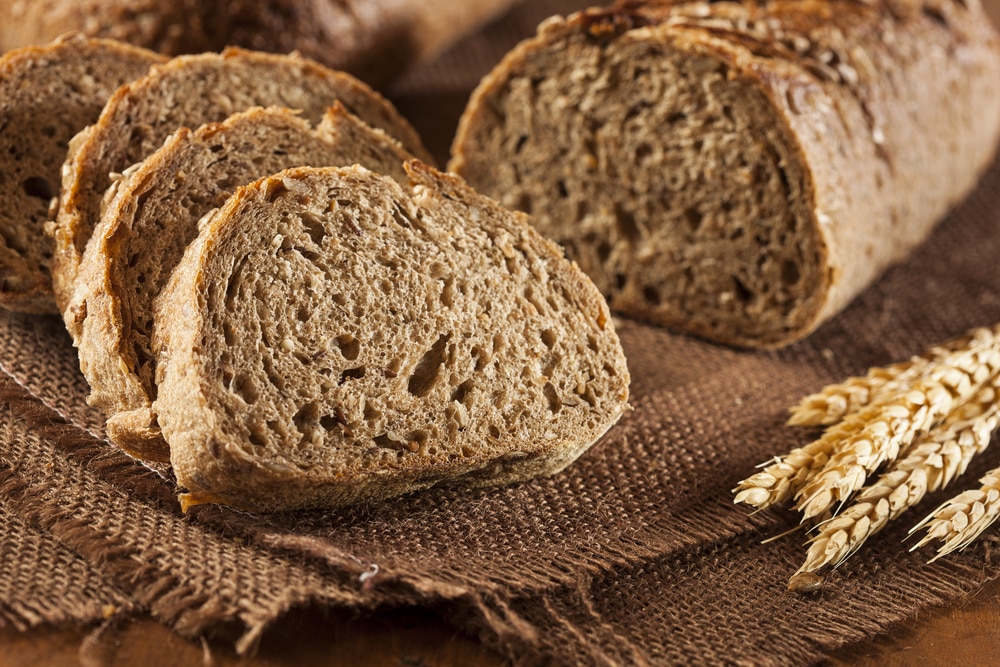
Whole Wheat Bread
When buying bread, opt for unprocessed whole wheat over refined white bread. Whole wheat bread is a great source of fiber, B vitamins, protein, and iron. And unlike white bread, it manages hunger for longer while keeping your blood sugar in check. If you’re worried about getting enough iron, but endless supplies of iron-rich veggies leave your appetite unsatisfied, a slice of 100% whole wheat bread will help you feel fuller for longer, while providing an energy boost that lasts for hours.
Serving Size (1 slice), 0.7 milligrams of iron (4% DV), 69.2 calories[/column]
[column size=”one-half” last=”true”]
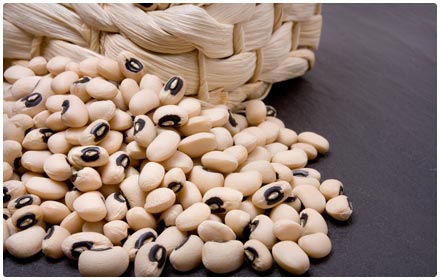
Black-Eyed Peas
Like other legumes, black-eyed peas are a rich source of iron. A serving size of one single cup can supply up to a quarter of your recommended daily iron intake, while providing you with other health benefits as well. They also contain a respectable amount of vitamin C—enough to make it much easier for your body to absorb the essential iron.
Serving Size (1 cup, boiled), 4.3 milligrams of iron (24% DV), 200 calories[/column]
[column size=”one-half”]

Broccoli
Though many vegetables contain lots of iron, many also are packed with iron inhibitors, which means your body is unable to absorb much of the iron. Fortunately, cruciferous veggies like broccoli are also filled with vitamin C. This plays a huge role in helping your body absorb and digest the essential iron. Eating a serving of broccoli every day is a great way to get more iron into your diet.
Serving Size (1/2 cup), 0.3 milligrams of iron (2% DV), 15 calories[/column]
[column size=”one-half” last=”true”]

Kale
If you need more iron in your diet but can’t afford a jump in calories, kale is a fat-free super food that will provide your body with a mountain of nutrients and only a handful of calories. One of the cruciferous vegetables (in the same grain as broccoli, collard greens, and Brussels sprouts), kale helps fight anemia and fatigue with a high iron content. If you have trouble eating it raw, try sautéing it, throwing it in your soup or on a burger, or making delicious kale chips in your oven or food dehydrator.
Serving Size (1 cup), 1.1 milligrams of iron (6% DV), 33.5 calories[/column]
[column size=”one-half”]
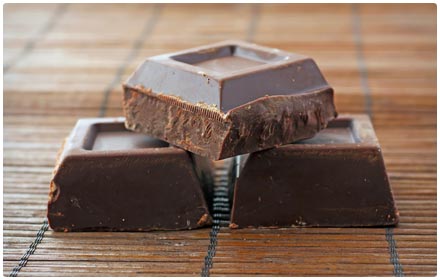
Dark Chocolate
By now, most people know that dark chocolate is good for your heart (in moderation). But did you also know that it’s loaded with iron? A 100 gram serving size contains about 66% of your recommended daily intake. Of course, this sweet treat should be eaten in moderation, but it can certainly be enjoyed as part of a balanced, iron-rich diet.
Serving Size (100 grams), 11.9 milligrams of iron (66% DV), 599 calories[/column]
[column size=”one-half” last=”true”]
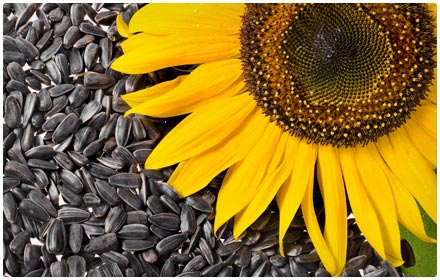
Sunflower Seeds
Sunflower seeds are known for their impressive supply of vitamin E, but they also pack plenty of essential minerals, especially iron. A one cup serving supplies nearly half your body’s daily iron needs, so if you’re not enjoying this easy and tasty snack regularly, now is a great time to start. Sunflower seeds can be found at your local grocery store year round.
Serving Size (1 cup), 2.4 milligrams of iron (13% DV), 269 calories[/column]
[column size=”one-half”]

Peas
Fresh and cooked peas have a slightly sweeter taste than many other vegetables. And like other green veggies, they’re rich in iron and other nutrients. It’s easy to incorporate these tender veggies into your favorite meals, and a 100-gram serving provides about 9% of the daily recommended value of iron. Cook a serving as a standalone side dish, or incorporate peas into your salad, soup, and pasta dishes.
Serving Size (100 grams), 1.5 milligrams of iron (9% DV), 84 calories[/column]
[column size=”one-half” last=”true”]

Strawberries
Eating fresh strawberries is a great way to ramp up your daily iron intake. Not only are strawberries a viable source of iron (a pint constitutes roughly 8% of the daily recommended value), but the high vitamin C content helps your body absorb more of the iron it needs. Strawberries make an excellent side to any breakfast dish, they’re great in an afternoon smoothie, and you can also serve them as a sweet after-dinner treat.
Serving Size (1 pint), 1.5 milligrams of iron (8% DV), 114 calories[/column]
[column size=”one-half”]
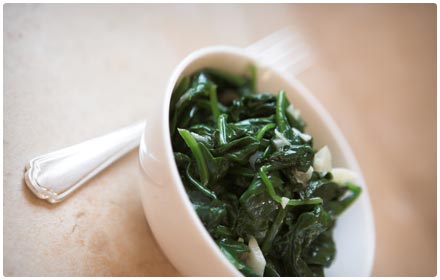
Cooked Spinach
Boasting a long list of vitamins and nutrients, spinach consistently ranks at the top of the “super food” lists. Among other myriad nutrients, cooked spinach is an excellent source of iron. And since this leafy green is also loaded with vitamin C, your body will have no trouble absorbing all that iron. Spinach can be eaten raw, but cooking it first will provide greater amounts of iron, among other benefits.
Serving Size (1 cup), 6.4 milligrams of iron (36% DV), 41 calories[/column]
[column size=”one-half” last=”true”]
[/column]
[hr]
There’s a misconception that vegans & vegetarians are more likely to suffer from iron deficiency than their meat-eating counterparts. In fact, vegetarians have tons of iron-rich options in the form of fruits, vegetables, beans, grains, and more. Most of these colorful foods also contain several other essential vitamins, nutrients, and minerals, so adding these healthy, iron-rich foods to your diet can improve your health in many great ways.
You may also like our list of 66 Super Foods and low carb, protein-rich foods.



